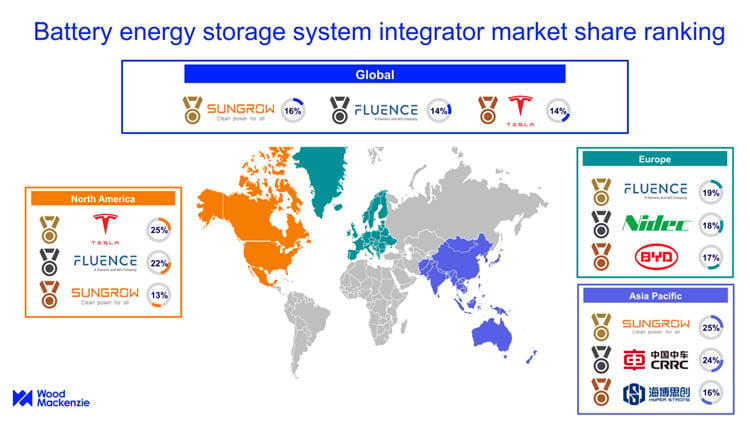Report on the Role of Business Intelligence in Advancing Sustainable Development Goals via the Renewable Energy Sector
Executive Summary
This report outlines the critical function of specialized business intelligence in the renewable energy sector, with a specific focus on its contribution to achieving the United Nations Sustainable Development Goals (SDGs). Analysis of the wind and solar industries, facilitated by dedicated information sources, is integral to strategic decision-making, investment, and policy formation, thereby accelerating progress on global sustainability targets.
Driving SDG 7: Affordable and Clean Energy
The primary contribution of business intelligence in the renewables sector is the direct support for SDG 7. By providing reliable and timely information, these resources empower stakeholders to:
- Increase the share of renewable energy in the global energy mix.
- Facilitate international cooperation to enhance access to clean energy research and technology.
- Promote investment in energy infrastructure and clean energy technology.
- Analyze market trends, project developments, and policy changes to de-risk investments in wind and solar power.
Synergistic Impact on Associated Sustainable Development Goals
The focus on renewable energy creates a cascading positive effect on numerous other SDGs. Strategic insights into the wind and solar sectors are instrumental in advancing the following goals:
- SDG 13: Climate Action: By providing in-depth analysis of renewable energy projects, business intelligence directly supports global efforts to mitigate climate change and strengthen resilience to climate-related hazards.
- SDG 8: Decent Work and Economic Growth: Coverage of the renewables industry highlights opportunities for job creation, economic diversification, and sustainable economic growth fueled by the green transition.
- SDG 9: Industry, Innovation, and Infrastructure: In-depth features on technological advancements and infrastructure projects within the wind and solar sectors foster innovation and guide the development of resilient, sustainable infrastructure.
- SDG 11: Sustainable Cities and Communities: Information on renewable energy deployment is crucial for urban planners and policymakers working to create cities with sustainable and affordable energy systems.
- SDG 17: Partnerships for the Goals: A centralized source of industry intelligence serves as a vital platform for fostering partnerships between governments, the private sector, and civil society to mobilize and share knowledge, technology, and financial resources for achieving sustainable energy for all.
Analysis of Sustainable Development Goals (SDGs) in the Article
1. Which SDGs are addressed or connected to the issues highlighted in the article?
- SDG 7: Affordable and Clean Energy – The article’s central theme is the “renewable energy industries,” with a specific focus on the “wind and solar sectors,” which directly aligns with the goal of ensuring access to clean energy.
- SDG 9: Industry, Innovation and Infrastructure – By mentioning “business intelligence,” “industries,” and the “wind and solar sectors,” the text connects to the goal of building resilient infrastructure and promoting inclusive and sustainable industrialization through clean technologies.
- SDG 13: Climate Action – The development of wind and solar energy is a primary strategy for climate change mitigation. The article’s focus on these sectors links it to the broader goal of taking action to combat climate change.
2. What specific targets under those SDGs can be identified based on the article’s content?
- Target 7.2: “By 2030, increase substantially the share of renewable energy in the global energy mix.” The article’s subject matter, which is business intelligence for the “wind and solar sectors,” is directly relevant to achieving this target.
- Target 9.4: “By 2030, upgrade infrastructure and retrofit industries to make them sustainable… with greater adoption of clean and environmentally sound technologies and processes…” The article highlights the industrial and business side of these clean technologies.
3. Are there any indicators mentioned or implied in the article that can be used to measure progress towards the identified targets?
The provided article does not mention or imply any specific, measurable indicators. The text is a promotional description of a media source (“Recharge”) and its area of coverage. It does not contain any quantitative data, statistics, or metrics (such as installed capacity, investment figures, or energy production levels) that could be used to measure progress towards the identified targets.
4. Table of SDGs, Targets, and Indicators
| SDGs | Targets | Indicators |
|---|---|---|
| SDG 7: Affordable and Clean Energy | Target 7.2: Increase substantially the share of renewable energy in the global energy mix. | None mentioned in the article. |
| SDG 9: Industry, Innovation and Infrastructure | Target 9.4: Upgrade infrastructure and retrofit industries to make them sustainable… with greater adoption of clean and environmentally sound technologies. | None mentioned in the article. |
| SDG 13: Climate Action | The article’s topic relates to climate action, but no specific targets can be directly identified from the text. | None mentioned in the article. |
Source: rechargenews.com







